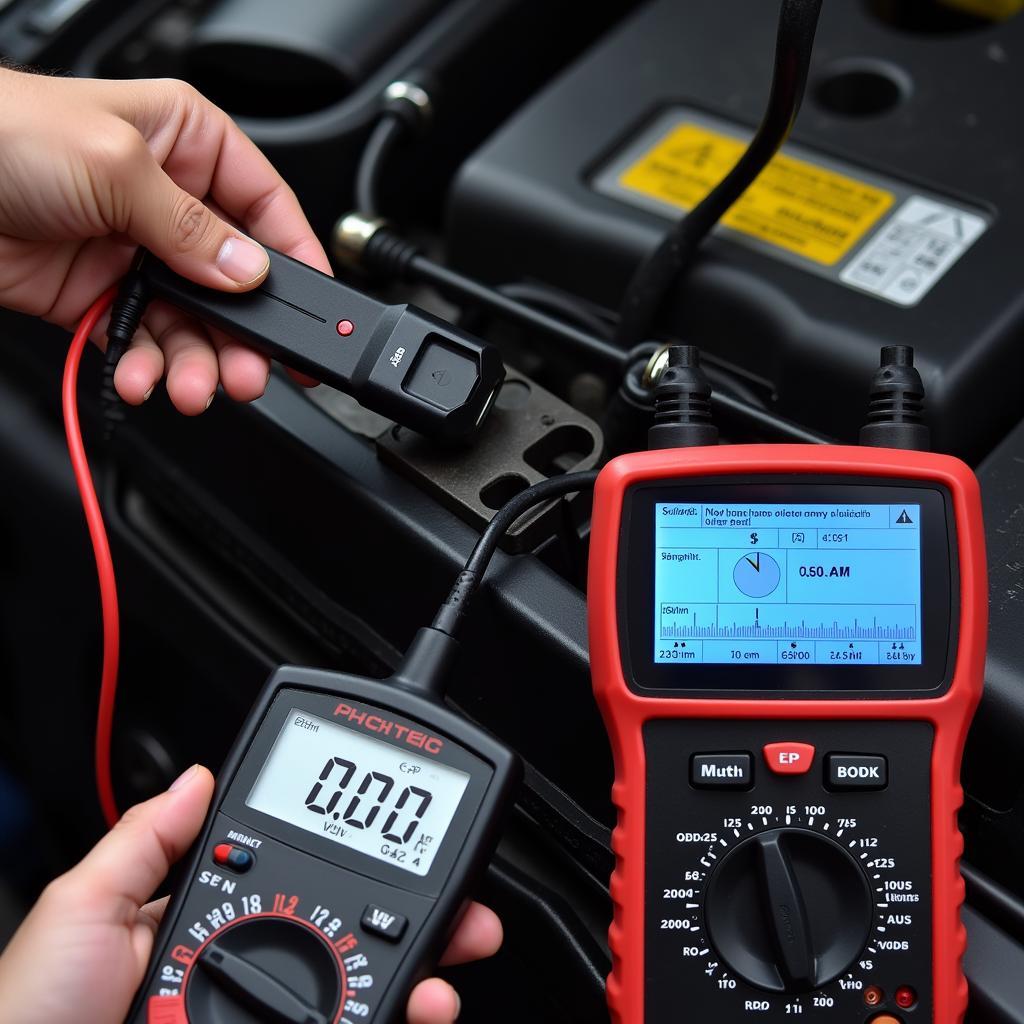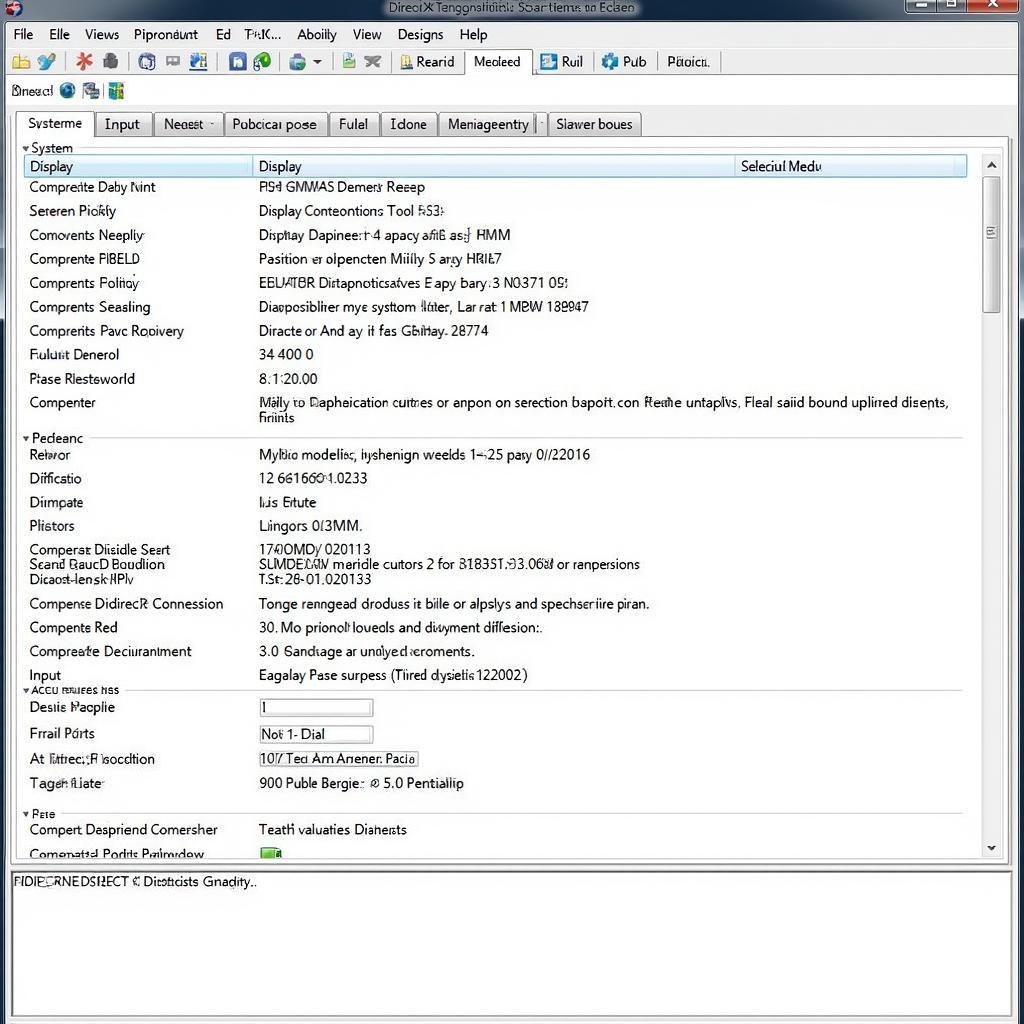Modern vehicles are increasingly reliant on complex electrical systems. From engine management to safety features, a vast network of sensors, actuators, and control modules governs nearly every aspect of vehicle operation. When something goes wrong, pinpointing the issue can be a daunting task without the right Auto Electrical Diagnostic Tools. This guide explores the essential tools and techniques needed to diagnose and troubleshoot automotive electrical problems effectively.
After the introduction, we’ll delve into the specifics of different auto electrical diagnostic tools. You can find a wealth of information on specialized tools like the Mac Mentor diagnostic tool, useful for specific vehicle makes.
Understanding the Importance of Auto Electrical Diagnostic Tools
Accurate diagnosis is the foundation of any successful repair. Guesswork and trial-and-error methods are not only inefficient but can also lead to unnecessary component replacements and further damage. Auto electrical diagnostic tools empower technicians and DIY enthusiasts alike to quickly and accurately identify the root cause of electrical malfunctions, saving time and money in the long run. These tools provide valuable insights into the inner workings of the vehicle’s electrical system, allowing for precise troubleshooting.
Essential Auto Electrical Diagnostic Tools
A well-equipped toolbox should include a variety of tools to address different diagnostic needs. Here are some of the most common and essential auto electrical diagnostic tools:
- Multimeter: This versatile tool measures voltage, current, and resistance, allowing technicians to test circuits and components for proper operation.
- Scan Tool: A scan tool communicates with the vehicle’s onboard computer (ECU) to retrieve diagnostic trouble codes (DTCs), monitor live data streams, and perform various diagnostic tests. Investing in a quality scan tool is crucial for efficient diagnostics.
- Oscilloscope: This advanced tool displays waveforms of electrical signals, providing detailed information about the behavior of circuits and components over time. It’s particularly useful for diagnosing complex issues related to sensor signals and communication networks.
- Test Light: A simple yet effective tool for checking the presence of power or ground in a circuit.
- Wiring Diagrams: Essential for understanding the intricate connections within the electrical system.
- Circuit Breaker Tester: Helps identify faulty circuit breakers that may be causing intermittent problems.
 Using a Multimeter and Scan Tool for Auto Electrical Diagnostics
Using a Multimeter and Scan Tool for Auto Electrical Diagnostics
How to Use Auto Electrical Diagnostic Tools Effectively
Using these tools effectively requires a systematic approach and a good understanding of automotive electrical principles. Here’s a step-by-step guide:
- Gather Information: Begin by interviewing the vehicle owner to understand the symptoms they’re experiencing.
- Visual Inspection: Check for any obvious signs of damage, loose connections, or corrosion.
- Retrieve DTCs: Connect a scan tool and retrieve any stored diagnostic trouble codes. These codes provide valuable clues about the potential source of the problem. Tools like the BMW OPS diagnostic tool can be especially helpful for certain vehicle makes.
- Analyze Live Data: Monitor live data streams from various sensors and components to identify any anomalies.
- Perform Targeted Tests: Based on the DTCs and live data, perform targeted tests using the appropriate diagnostic tools, such as a multimeter or oscilloscope.
- Verify Repairs: After making repairs, re-test the system to ensure the problem has been resolved.
 Technician Consulting Wiring Diagram During Auto Electrical Diagnosis
Technician Consulting Wiring Diagram During Auto Electrical Diagnosis
For diesel engine issues, specialized tools like common rail diagnostic tools are invaluable. These tools allow technicians to pinpoint problems within the high-pressure fuel injection systems common in modern diesel vehicles.
Common Mistakes to Avoid
- Replacing Parts Without Proper Diagnosis: This can lead to unnecessary expenses and may not resolve the underlying issue.
- Ignoring DTCs: Diagnostic trouble codes provide valuable insights and should never be ignored.
- Failing to Consult Wiring Diagrams: Understanding the electrical system’s layout is crucial for effective troubleshooting.
“A thorough understanding of the vehicle’s electrical system and the proper use of diagnostic tools are essential for accurate and efficient repairs,” says John Smith, Senior Automotive Electrical Engineer at AutoTech Solutions.
Staying Up-to-Date with the Latest Technology
The automotive industry is constantly evolving, with new technologies and diagnostic tools emerging regularly. Staying up-to-date with the latest advancements is essential for any technician or DIY enthusiast serious about auto electrical diagnostics. For example, consider the 2004 Ford Explorer diagnostic tools machine, which offers specialized diagnostic capabilities for this specific vehicle model.
 Technician Using Advanced Auto Electrical Diagnostic Software on Laptop
Technician Using Advanced Auto Electrical Diagnostic Software on Laptop
Conclusion
Mastering auto electrical diagnostic tools is an ongoing process that requires continuous learning and practice. By understanding the function and application of these tools, technicians and DIY enthusiasts can effectively diagnose and repair complex electrical problems, keeping vehicles running smoothly and safely. Contact ScanToolUS at +1 (641) 206-8880 or visit our office at 1615 S Laramie Ave, Cicero, IL 60804, USA for assistance with your auto electrical diagnostic needs. We offer a range of tools, including pinball diagnostic tools, to suit your specific requirements.




Pingback: Network Diagnostic Tools Mac: Your Guide to Troubleshooting Car Network Issues - Car Scan Tool
Pingback: Unveiling the Power of Network Diagnostic Tools: An Example - Car Scan Tool